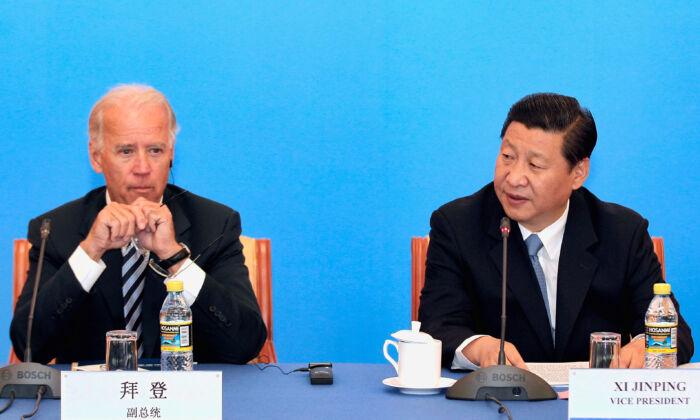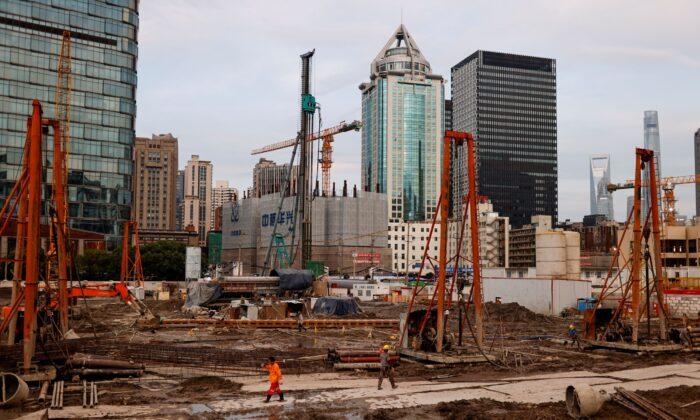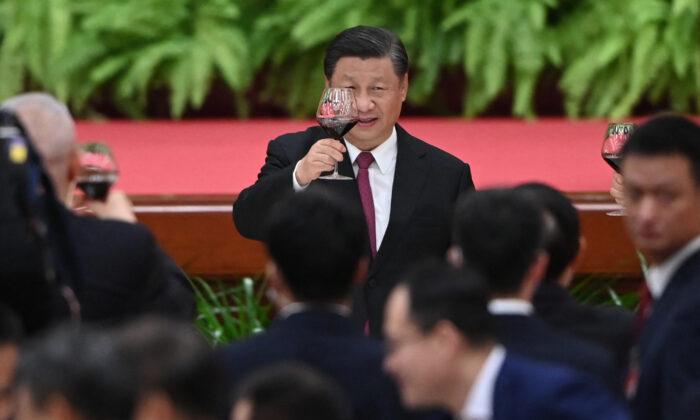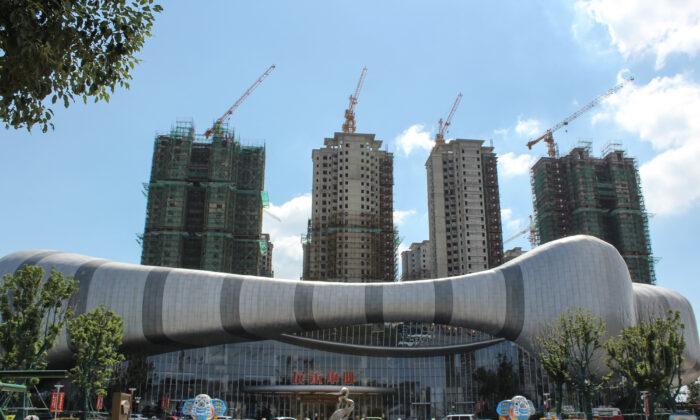Commentary
Among the challenges that President Joe Biden is facing, the issue of U.S.–China relations is undoubtedly on top of the list.
Some “panda-hugging” political elites had hoped that Biden would, as soon as he was sworn in, reverse the Trump-era confrontation, and return to the Obama-era “honeymoon” phase. However, so far, Biden has been taking a “quiet and no action” approach toward China, despite its repeated aggressive moves.
This has made Beijing quite anxious.
Whether Biden likes it or not, the Trump administration has long-lasting influence on U.S.–China relations. During the fourth year of Trump’s presidency, tensions escalated into a “cold war.” Can Biden reverse this trend? In fact, Beijing’s intentions and actions are a crucial determining factor, regardless of what Biden thinks.
Will US–China Cold War End Shortly After It Starts?
Many of Biden’s Cabinet members and White House staff are Obama-era officials. These “panda-huggers” created the so-called honeymoon period with Beijing, resulting in the rise of the CCP. The “panda-huggers” definitely won’t admit their mistakes. Naturally, they want to end the tensions with China and return to an era of “dialogue and cooperation.”That’s exactly what the CCP wants.
The panda-hugging officials and scholars share one common trait: They don’t like and don’t understand cold wars. They didn’t understand the Soviet Union back in the day and aren’t interested in knowing more. Additionally, most panda-huggers don’t have a military background, so they don’t know how to handle the U.S.–China conflict.
Some of the panda-huggers even wish that the conflict would end, so that they don’t have to face it. On Jan. 14,
The Diplomat published an article titled “The U.S. Strategic Framework for the Indo-Pacific: 3 Curiosities.” Holding to the typical geopolitical mindset, the article criticizes the Trump administration’s
U.S. Strategic Framework for the Indo-Pacific, saying that it ignored the importance of Mongolia in the region.
Then, on Feb. 1, New York Times columnist Nicholas Kristof wrote an opinion
article titled “Biden’s Nightmare May Be China.” Kristof stated that “the United States would most likely be drawn into perhaps the most dangerous confrontation with another nuclear power since the Cuban missile crisis,” and that “the criticisms reflect a hardening toward Beijing across the political spectrum that leaves little room for diplomacy. That makes me nervous.”
Due to the mistakes in China policy during the Obama administration and those before it, the United States isn’t prepared for this confrontation. There was only one report on military readiness, published in 2016 by the
RAND Corp. The report, “War with China: Thinking Through the Unthinkable,” pointed out that among the published research literature on how U.S. preparedness in case of war with China, none offered detailed and serious analysis. That’s a huge omission. This statement remains true even now.
With Biden as president, will the tense U.S.–China situation relax a bit? The world is watching. When the CCP “panda” approaches the panda-huggers with a sharp knife in hand, what will they do? Continue to hug the panda? The fact is that the panda-huggers will be forced to face the reality that the “panda” is actually a “red tiger” that was being fed by the United States.
CCP Wants New Relationship With US
Since Biden became president, the CCP has been eager to see changes in three aspects. One is the removal of tariffs, so that China can continue exports to the United States. Another is the removal of investment bans against Chinese companies, so that they can continue to raise funds in the United States. Third is the removal of import restrictions on U.S.-origin sensitive technology, so that the CCP can continue acquiring intellectual property.But aside from
delaying some restrictions on Chinese-military-linked companies, Biden has been following the Trump route in all other areas.
Even before Biden entered the White House, Beijing ordered Cui Tiankai, Chinese ambassador to the United States, in December 2020 to arrange a series of high-profile meetings between U.S. officials and China’s top diplomat, Yang Jiechi. Ultimately, they seek to arrange a meeting between Biden and Xi.
The CCP sent a series of strong messages via official speeches and its
mouthpiece media.
On Jan. 26, former Chinese Vice Premier
Zeng Peiyan told a Hong Kong forum on U.S.–China relations that a new round of trade talks should be negotiated and that U.S. tariffs should be removed. On Jan. 28,
Le Yucheng, China’s vice foreign minister, said it was “imperative” for the United States “to reverse the wrong course” when it comes to its China policy. On Jan. 29, China’s Vice Chair
Wang Qishan appealed for greater cooperation and fewer clashes during a video conference with U.S. business leaders and former officials. On Feb. 2, Chinese diplomat
Yang’s speech during an event at the National Committee on U.S.–China Relations clearly indicated Beijing’s desire to drive the Biden administration’s China policy.
Yang said that the Trump administration adopted misguided policies on China, and so, the United States should now work on four things: 1. Correct all “mistakes” by the Trump administration; 2. Resume normal exchange of students, and remove restrictions on Chinese state-run media and companies; 3. Stick with the one-China policy; 4. Start cooperation for mutual benefit.
Beijing’s strong rhetoric drew a red line for Biden’s China policy. The first three items were flat-out demands, while the fourth is about “cooperation,” a word used by Yang 24 times during his speech. Yang’s entire speech was arrogant and demanding; he even scolded the United States and warned it not to mention the issue of U.S. national security to Beijing.
Military Standoff Continues in the Pacific
So far, the Biden administration has acted indifferently to the CCP’s pressures. Its main concern is the Indo-Pacific region.To reach the mid-Pacific region, Beijing needs to break through the South China Sea island chain, in order to hide and strike suddenly. The main base for the CCP navy’s submarines is the Yulin Habor near Sanya city, on Hainan island. There are three
deep-sea routes from there to the mid-Pacific, which are heavily guarded by the U.S. Navy. To the northeast of Sanya is the Bashi Channel (southwest of Taiwan), which is the shortest route to the United States. Therefore, the waters southwest of Taiwan have become an important zone for both powers.
Since October 2020, the CCP’s submarines have been active in that region. From Jan. 2 to Jan. 9, then from Jan. 11 to Jan. 20, and from Jan. 22 to Jan. 31, the CCP navy sent anti-submarine aircraft to an area frequented by U.S. submarines. In response, on Jan. 23, the Theodore Roosevelt Carrier Strike Group
entered the South China Sea to conduct routine operations.
The CCP isn’t just trying to advance its submarines through the Bashi Channel, but is also using unmanned underwater vehicles in the
Laut Jawa Sea in Indonesia for underwater mapping. The purpose is to open up the “southern route,” so military vehicles can move from the Laut Jawa Sea through northern Australia to the mid-Pacific.
Under the CCP’s verbal coercion and military provocations, the Biden administration has no choice but to follow Trump-era-like policies, at least for now.
Dr. Cheng Xiaonong is a scholar of China’s politics and economy based in New Jersey. Cheng was a policy researcher and aide to former Party leader Zhao Ziyang, when Zhao was premier. He also served as chief editor of the journal Modern China Studies.
Views expressed in this article are opinions of the author and do not necessarily reflect the views of The Epoch Times.





